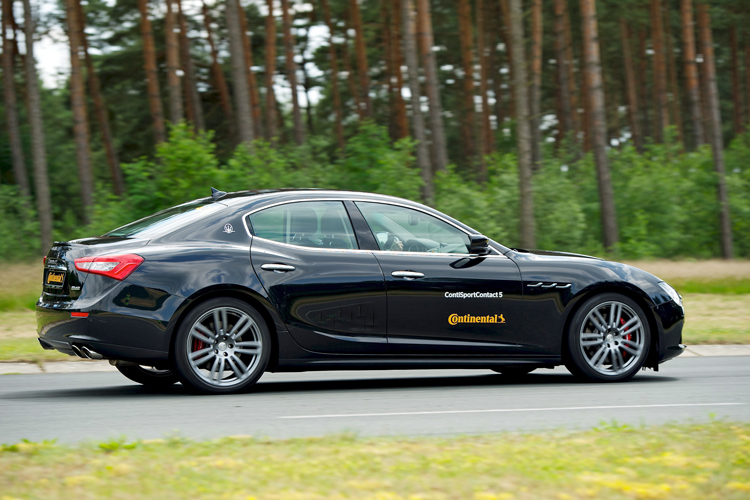
Grip is primarily determined and influenced by the tyres you use.
You have probably heard about how important grip is when it comes to safety and performance.
High levels of grip improve acceleration, braking and overall handling – how well a car can respond to a driver’s inputs. A car with good handling lets a driver respond to various situations with minimal effort.
How much grip your car has is primarily down to its tyres, which are in contact with the road. To be more specific, a tyre’s contact patch – about the size of an adult’s palm – is the part always touching the road.
Therefore, enthusiasts opt for high-performance tyres, which offer more grip than eco-friendly or touring tyres.

WHERE DOES A TYRE’S GRIP COME FROM?
Generally speaking, it comes from the rubber compound, tread pattern and sidewalls.
Stickier rubber compounds help a tyre literally stick to the road, while stiff sidewalls prevent deformation during braking and cornering. This helps maintain the width of the contact patch.
The tread pattern or design has several roles. Apart from evacuating water (thus preventing aquaplaning), it also influences braking, acceleration, comfort and service life.

Lexus’ double wishbone front suspension.
SUSPENSION MATTERS
Although tyres play the biggest role in determining traction, we must not forget about a car’s suspension.
Overly pliant dampers enhance comfort but are detrimental to handling. A car with soft suspension will lean considerably around corners. It will also squat under hard acceleration and dive during hard braking.
A vehicle’s ride height also comes into play. Many drivers lower their car to lower its centre of gravity, giving it more stability when cornering.
Firmer dampers, a lower ride height and high-performance tyres help improve overall grip and handling.

ESP and various drive settings, especially on SUVs, also influence grip and roadholding.
ESP, ABS AND ALL-WHEEL-DRIVE
The Electronic Stability Programme (ESP) or traction control feature in new cars helps prevent collisions by reducing engine power when wheelspin is detected.
As the slipping wheels slow down, traction can be regained.
Your anti-lock braking system (ABS) helps you retain grip by preventing the wheels from locking up under braking and sending your car into a skid.
On slippery surfaces, all-wheel-drive systems can redirect power away from the wheels that are slipping to the ones with traction. In this way, grip is also maintained.

Too much standing water can cause a loss of traction, which could lead to aquaplaning.
ROAD CONDITIONS
So far, we have discussed components that are controlled by the driver. But the other half of the equation lies in the road conditions he or she faces.
You can have the most optimal suspension setup and the grippiest tyres, but these can still be overwhelmed by a torrential downpour and a road with inadequate or blocked drainage.
Likewise, an oil spill would also render the best suspensions, setups and tyres useless.
Other road conditions, such as undulations or bumps in the middle of a corner, can also negatively affect grip, especially in wet weather.
Are grip and roadholding the same?
What’s the difference between handling and roadholding?
4 ways to help your suspension last longer
3 signs your tyres need to be replaced asap












